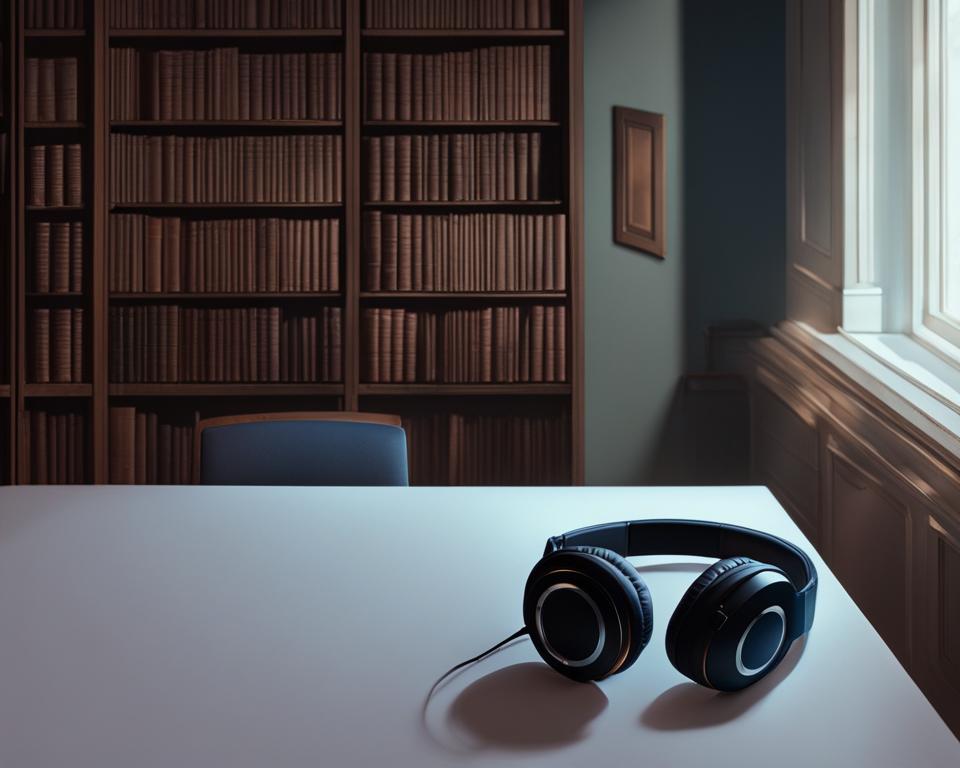Welcome to my comprehensive review of the audiobook adaptation of “All the Light We Cannot See.” As an avid reader and audiobook enthusiast, I was excited to dive into the captivating world of this highly acclaimed novel turned audiobook. In this review, I’ll share my thoughts on the audiobook experience, narration, performances, plot, storytelling, and themes, as well as the mesmerizing world created by the author. Join me as we explore why “All the Light We Cannot See” has captured the hearts of millions of readers around the world and why its audiobook adaptation is a must-listen.
Introduction to “All the Light We Cannot See”
Greetings, fellow book lovers! Today, I’m thrilled to introduce you to “All the Light We Cannot See.” Written by Anthony Doerr and originally published in 2014, this novel has captured the hearts of readers worldwide. It even won the Pulitzer Prize for Fiction! The story takes place during World War II and follows the lives of two young people: a French girl named Marie-Laure and a German boy named Werner.
The novel delves into their lives, the struggles they face, and the people they meet along the way as they navigate the cruel realities of war. As we explore this book, we’ll dive into the captivating world of “All the Light We Cannot See” and discover why it has become a beloved classic in modern literature.
One of the things that immediately stands out about this novel is its poetic style. Doerr’s writing is like a work of art, with vivid imagery and descriptive language that draws you into the story. From the very first page, you’ll be transported to a different time and place, feeling as if you’re right beside the characters.
Another aspect that makes “All the Light We Cannot See” so mesmerizing is its portrayal of war from multiple perspectives. Instead of focusing solely on the battles and conflicts, the novel takes a more nuanced approach, exploring the impact of war on individual lives. We see how it affects not only the soldiers on the front lines but also the civilians living in occupied territories.
Overall, “All the Light We Cannot See” is a masterpiece in modern literature, and I’m excited to explore it with you. Join me as we delve deeper into this incredible story and the unique experience of listening to the audiobook adaptation. Get ready to enter a world filled with emotion, humanity, and the beauty of the written word.
The Audiobook Experience
For those who are new to the world of audiobooks, “All the Light We Cannot See” is an excellent starting point. The audiobook adaptation immerses you in the world of the novel while allowing you to multitask or travel in the meantime.
One of the biggest advantages of audiobooks is the ability to listen while doing other activities such as driving, cooking, or exercising. With “All the Light We Cannot See,” the captivating story and stunning narration will make the time fly by without even realizing how far you have progressed through the book.
Of course, listening to an audiobook also poses its own set of challenges. Unlike reading physical books, you can’t skim through pages or re-read sentences easily. But fear not! The narration in this audiobook is so well done that every detail of the story is conveyed with precision.
With audiobooks growing in popularity, “All the Light We Cannot See” is a prime example of why this medium can be so enjoyable and accessible. So whether you’re a seasoned audiobook listener or a first-timer, I highly recommend giving this audiobook a listen.
Narration and Performance
One of the major advantages of experiencing “All the Light We Cannot See” as an audiobook is the exceptional narration and performances by the voice actors. Each character is brought to life with a unique voice and personality, enhancing the overall storytelling experience.
The narrator, Zach Appelman, does an excellent job of setting the tone and pace of the narrative. His engaging voice draws you into the story and keeps you invested throughout the entire audiobook.
But it’s not just the narrator who shines in this audiobook. The voice actors who portray the main characters, Marie-Laure and Werner, are equally impressive. Their performances are nuanced and emotional, capturing the essence of each character and making them feel like real people.
The chemistry between the voice actors is also something to behold. Their interactions feel natural and authentic, adding another layer of depth to the storytelling.
Overall, the narration and performances in the “All the Light We Cannot See” audiobook are top-notch. They bring the characters and story to life in a way that enhances the overall listening experience.
The Mesmerizing World of “All the Light We Cannot See”
The setting of “All the Light We Cannot See” is a character in itself. Author Anthony Doerr creates a mesmerizing world that is both haunting and beautiful. From the grandeur of Parisian architecture to the eerie silence of Saint-Malo, we are transported to a time of war where the beauty of the world contradicts the horrors of human conflict.
Doerr’s masterful use of descriptive language paints a vivid picture of the world his characters inhabit. We are privy to the atmospheric details that contribute to the story’s overall impact. The sound of shells exploding in the distance, the smell of cordite lingering in the air, and the weight of a radio on one’s back all come to life thanks to Doerr’s exquisite prose.
It’s easy to get lost in the world of “All the Light We Cannot See.” Though the setting is a bleak one, there is beauty to be found in the most unexpected places. And it’s this juxtaposition of light and dark that makes this novel so mesmerizing.
The title, “All the Light We Cannot See,” is a testament to the power of perception. Just as the characters in the novel are blinded by the events of war, we too are blinded by the light we cannot see. It’s a metaphor that both fascinates and intrigues, inviting us to explore the limits of our own understanding.
In the next section, we’ll explore the intricate plot and enthralling storytelling techniques used in “All the Light We Cannot See.”
Plot and Storytelling
As an audiobook listener, I found the plot and storytelling in “All the Light We Cannot See” to be incredibly engrossing. The novel’s structure jumps back and forth between the parallel stories of Marie-Laure and Werner, two young people caught up in the chaos of World War II. Despite the non-linear format, the story flows seamlessly, keeping the listener fully engaged.
The audiobook benefits from its expert narration, which breathes new life into Doerr’s beautiful prose. The book’s action and suspense come alive through the vocal performances of the cast, who bring vivid personalities and emotions to each of the characters. The auditory experience plays a significant role in the overall impact of this audiobook.
The character development throughout the story is truly remarkable. Each main character is complex and multifaceted, with their own unique struggles and triumphs. The listener becomes particularly invested in the fate of Marie-Laure and Werner, who represent different sides of the same conflict. Their unlikely connection creates a fascinating dynamic that is both heartwarming and heartbreaking.
All in all, the plot and storytelling in “All the Light We Cannot See” are incredibly well-crafted, creating a moving and unforgettable experience for audiobook listeners. The novel’s intricate details, character development, and suspenseful pace make it a must-listen for anyone seeking a rich and rewarding audiobook experience.
Themes and Symbolism
As I listened to the audiobook adaptation of “All the Light We Cannot See,” I was struck by the profound themes and symbolism present in the narrative. From the juxtaposition of light and darkness to the exploration of the human condition during times of war, this audiobook offers much to ponder and reflect upon.
The theme of duality is present throughout the story, with light and darkness being significant motifs. The use of light in the story represents hope, while darkness symbolizes fear and uncertainty. The contrast between the two is used to highlight the beauty of life and the unspeakable horrors of war.
Another significant theme is the power of human connection. As the characters navigate the perils of war, they form bonds that transcend social barriers and geographical divides. Their relationships serve as an example of the unifying power of compassion and empathy, even in the darkest of times.
Symbolism is also used to great effect in “All the Light We Cannot See.” The radio, for example, serves as a powerful symbol of communication and connection, both of which are crucial during times of war. The use of mollusks as a metaphor for the fragility of life and the interconnectedness of humanity is another example of the symbolic depth of this audiobook.
Overall, the themes and symbolism present in “All the Light We Cannot See” make this audiobook a thought-provoking and emotionally resonant experience. I highly recommend it to anyone seeking a profound and moving listening experience.
Conclusion
After listening to the audiobook adaptation of “All the Light We Cannot See,” I can confidently say that it is a must-listen for anyone who wants to experience a captivating and immersive story.
The exceptional narration and performances by the voice actors truly bring the characters to life, and the vivid descriptions of the setting create a mesmerizing atmosphere that draws you in from start to finish.
The intricate plot and enthralling storytelling techniques make this audiobook an unforgettable experience, and the profound themes and symbolism present in the narrative add a thought-provoking layer to the story.
Overall, this audiobook is a brilliant adaptation of a Pulitzer Prize-winning novel. I highly recommend it to anyone who loves audiobooks or is looking for a captivating and meaningful story. This concludes my review of “All the Light We Cannot See” audiobook.



